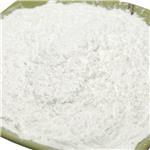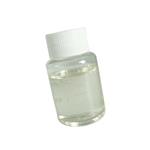Description
Hydroperoxides of Δ-3-carene are allergens contained
in turpentine. Occupational exposure occurs in painters,
varnishers, or in ceramic decoration. The percentage
of Δ-3-Carene is higher in Indonesian turpentine
than in Portugese.
Description
(±)-3-Carene is a bicyclic monoterpene found in a variety of plants, including
Cannabis. It decreases phagocytosis by rat alveolar macrophages when used at a concentration of 0.5 μM and decreases their viability at a concentration of 5 μM. (±)-3-Carene increases the expression and activity of alkaline phosphatase in mouse osteoblastic MC3T3-E1 subclone 4 cells, indicating induction of osteoblastic differentiation. It also induces calcium formation and increases the expression of osteopontin and type I collagen, which are related to osteoblast mineralization. (±)-3-Carene induces bronchoconstriction in isolated guinea pig lungs when exposed at an air concentration of 3,000 mg/m
3.
Chemical Properties
3-Carene has a sweet, pungent turpentine-like taste.
Chemical Properties
Clear, colorless liquid. Stable to approx-
imately 250C, resinifies with oxygen. Insoluble
in water; miscible with organic solutions. Com-
bustible.
Occurrence
Reported present in basil oil, bell pepper, bilberry, black currant berry juice and buds, fennel oil, grapefruit
juice, kumquat peel oil, lemon peel oil, lime peel oil (cold pressed and distilled), lovage seed, mandarin peel oil, orange juice, orange
peel oil, orange (bitter) peel oil, tangerine peel oil and other natural products.
Uses
Solvent, intermediate. 3-Carene is a mutagenic compound that may be found in the fumes of heating freshly cut spruce and birch chips. 3-Carene is also found i many esential oils and it inhibits acetylcholinesterase activity.
Preparation
Extracted from the pine tree oil.
Definition
A terpene hydrocarbon with both a 6-member and
3-member ring.
General Description
Colorless liquid with a sweet, turpentine-like odor. Floats on water.
Reactivity Profile
3-CARENE may react vigorously with strong oxidizing agents. May react exothermically with reducing agents to release hydrogen gas. In the presence of various catalysts (such as acids) or initiators, may undergo exothermic addition polymerization reactions. Will attack some forms of plastics [USCG, 1999].
Health Hazard
Inhalation causes headache, confusion, respiratory distress. Ingestion irritates entire digestive system and may injure kidneys; if liquid enters lungs, it causes severe pneumonitis. Contact with eyes or skin causes irritation.
Contact allergens
Hydroperoxides of D-3-carene are allergens contained
in turpentine. Occupational exposure occurs in painters,
varnishers, or ceramic decoration. The percentage
of D-3-carene is higher in Indonesian than in Portuguese
turpentine.
Toxics Screening Level
It is recommended that the Initial Threshold Screening Level (ITSL) for turpentine, along with
select monoterpenes (a-pinene, p-pinene, and A3-carene) be set at 1120 μg/m3 based on an
8-hour averaging time.






